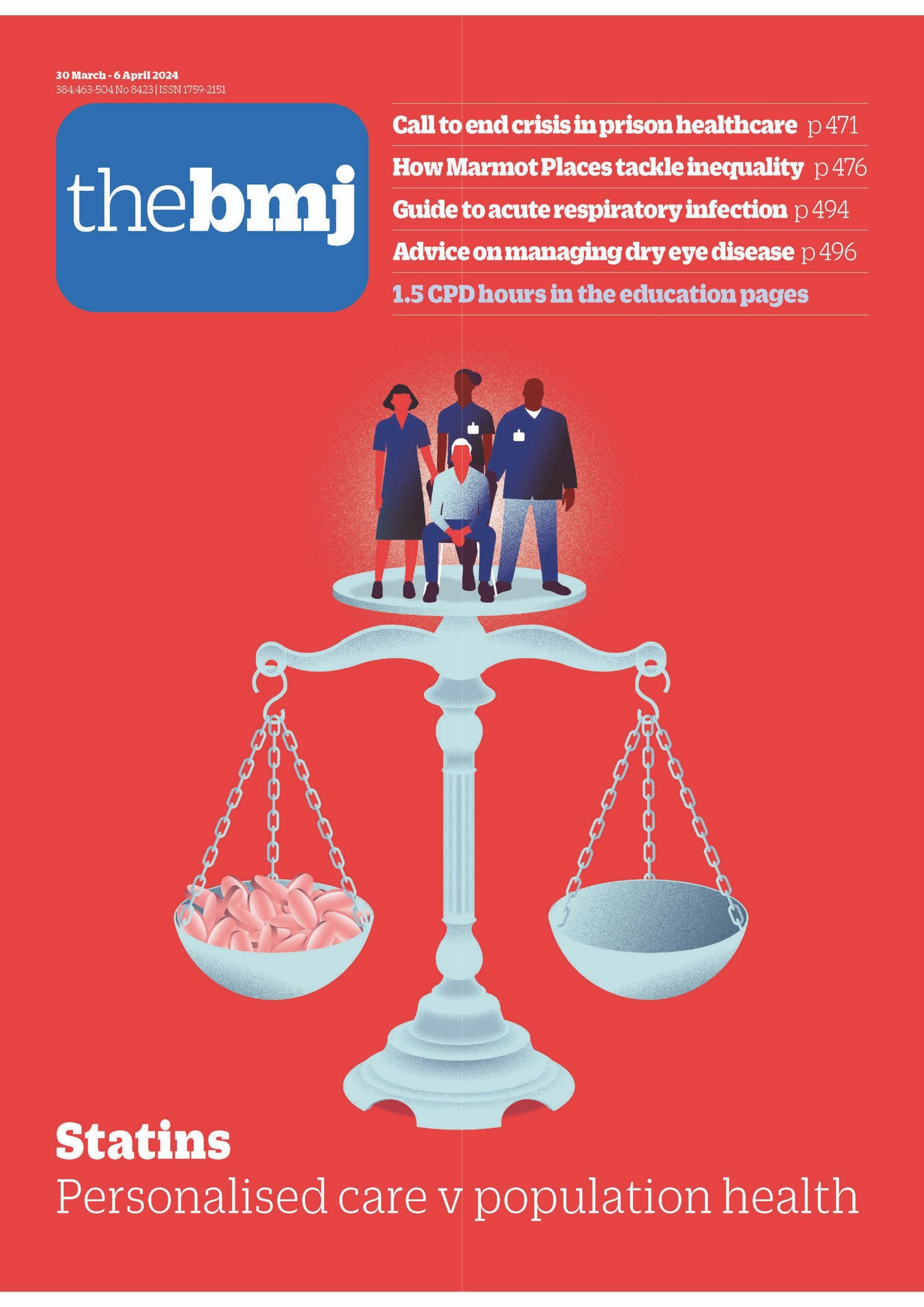Study design
This randomised, double blind, placebo controlled trial with two parallel arms was conducted in five tertiary care hospitals across China. The Biomedical Research Ethics Committee of Peking University First Hospital (2019-336) and other participating centres approved the study protocol (see supplement 1). Written informed consent was obtained from each participant. The trial is reported according to the Consolidated Standards of Reporting Trials guidelines.
Participants
Potential participants were screened with the Edinburgh postnatal depression scale at hospital admission for delivery. This scale is a patient reported 10 item questionnaire used to screen for perinatal depression; scores range from 0 to 30, with higher scores indicating more severe depression.28 The Chinese version of the Edinburgh postnatal depression scale has been validated, with a score of ≥10 indicating at least mild depression.29
We enrolled pregnant individuals aged 18 years or older with an Edinburgh postnatal depression scale score of ≥10 who were close to childbirth. We excluded those with a prepregnancy history of mood disorders, including depression; communication difficulties; severe complications of pregnancy, such as pre-eclampsia, placenta accreta spectrum, or HELLP (intravascular haemolysis, elevated liver enzymes, and low platelet count) syndrome; American Society of Anesthesiologists physical status III or higher; or any contraindications to ketamine or esketamine, such as refractory hypertension, severe cardiovascular disease, or hyperthyroidism.
Randomisation and masking
An independent biostatistician generated random treatment assignments in a 1:1 ratio, stratified by trial site, with a block size of four using the PROC PLAN procedure of SAS 9.2 software (SAS Institute, Cary, NC). Allocations were sealed in sequentially numbered opaque envelopes controlled by investigators who were otherwise not involved in data acquisition or the participants’ care. Coordinators (anaesthesiologist: CW; anaesthesia nurses: G-YG, ML, Y-CL, and C-CH) opened the randomisation envelopes according to the recruitment sequence shortly before the participants gave birth and prepared the appropriate study drugs—either 0.2 mg/kg esketamine diluted in 20 mL normal saline or 20 mL normal saline.

Syringes labelled “trial drug” were given to delivery room nurses for participants having a vaginal delivery or to anaesthesiologists for participants having a caesarean delivery. All participants, healthcare team members, and outcome assessors were therefore fully blinded to treatment. In emergencies such as rapid changes in a participant’s clinical status, the delivery room nurses or anaesthesiologists could adjust the speed of infusion or interrupt administration of the study drug. They could also request unmasking if deemed clinically necessary.
Perinatal care and intervention
Routine maternal monitoring included electrocardiography, non-invasive blood pressure measurement, and pulse oximetry, which were performed every one to two hours, or more frequently when necessary. Continuous external fetal heart rate monitoring or tocodynamometry were used as indicated. The participants were given detailed information about the potential benefits and risks of epidural analgesia for labour and decided, in consultation with their healthcare team, whether to have epidural analgesia during labour.
Epidural analgesia for those participants who requested it was initiated when the cervix was dilated at least 1 cm. An epidural catheter was inserted at the L2-L3 or L3-L4 interspace. A 10-15 mL mixture consisting of 0.08-0.13% ropivacaine and 0.36-0.45 μg/mL sufentanil was administered as a loading dose; an additional 5 mL of the mixture was given 10 minutes later if participants’ pain score was ≥4 on a numerical rating scale (an 11 point scale where 0=no pain and 10=the worst pain). A participant controlled epidural analgesia pump was attached 30 minutes later, which was established with a mixture of 0.07% ropivacaine and 0.36 μg/mL sufentanil, programmed to deliver an 8 mL bolus with a lockout interval of 30 minutes and an optional background infusion of 4 mL/h. Participant controlled epidural analgesia was discontinued during the second stage of labour, but the background infusion (if used) was continued. Epidural analgesia was usually stopped at the end of the third stage. For participants who did not request neuraxial analgesia, routine perinatal care including intramuscular pethidine was provided.
Obstetric management, including oxytocin and forceps assisted delivery or caesarean delivery was provided or conducted according to routine practice and the corresponding local guidelines. If emergency caesarean delivery was required, epidural anaesthesia was provided by injecting a suitable local anaesthetic dose through an indwelling epidural catheter; otherwise, combined spinal-epidural anaesthesia was used to a target sensory block level from T6 to T4. Vasopressors including ephedrine and phenylephrine were given to maintain blood pressure; opioids including pethidine were administered as supplement analgesia when necessary. Participant controlled epidural or intravenous analgesia was provided for up to 24 hours after caesarean delivery. Infusion of the trial drug (either 0.2 mg/kg esketamine or normal saline) was initiated at a rate of 30 mL/h over a 40 minute period after the umbilical cord was clamped.
Investigator training, data collection, and outcome measures
Before the trial began, investigators responsible for baseline data collection and follow-up assessments (SW, Fei-Xue Wang, TH, TY, H-YZ, and H-MY) were trained by psychiatrists (X-YS and H-NG) to use assessment tools, including the mini-international neuropsychiatric interview (version 6.0.0, depression module) and the 17 item Hamilton depression rating scale. The mini-international neuropsychiatric interview 6.0.0 is a brief structured diagnostic interview to assess depression,30 and the Chinese version has been validated.31 Psychiatrists and investigators who were involved in the trial were trained at https://harmresearch.org/ and were certified to diagnose depression with the mini-international neuropsychiatric interview 6.0.0. The Hamilton depression rating scale is a clinician reported scale designed to rate the severity of symptoms observed during major depressive episodes. The scale contains 17 items; possible scores for various items range from 0 to 2 or 0 to 4. The total scores range from 0 to 52, with 0-7 indicating no depression, 8-16 mild depression, 17-23 moderate depression, and ≥24 severe depression.32 The investigators were trained with a standardised patient and passed a consistency test (see eTable in supplement 2).
Baseline data of the participants were recorded, including personal characteristics, socioeconomic status, pregestational comorbidities, and details of the current pregnancy. Anxiety was assessed with the Zung self-rating anxiety scale (scores range from 20 to 80, with higher scores indicating more severe anxiety).33 Social support was assessed with the social support rating scale (scores range from 11 to 62, with higher scores indicating better social support).34 Marital satisfaction was assessed with the ENRICH (evaluation and nurturing relationship issues, communication, and happiness) marital satisfaction scale (scores range from 10 to 50, with higher scores indicating better marital satisfaction).35 The Chinese versions of these instruments have been validated.363738
Maternal data included acceptance of epidural analgesia, mode of delivery, estimated blood loss and fluid infusion, and use of supplemental analgesics and sedatives. Neonatal data included sex, bodyweight, Apgar scores at one and five minutes after birth, and initial destination (eg, postpartum ward, neonatal ward, or neonatal intensive care unit). Certificated investigators or anaesthesiologists supervised infusion of the study drugs. Vital signs including blood pressure, heart rate, oxygen saturation, and agitation-sedation level as assessed with the Richmond agitation-sedation scale (scores range from −5 (unarousable) to 4 (combative) and 0 indicates alert and calm39) were recorded every five minutes during infusion of the study drug and every 10 minutes thereafter for 60 minutes. Thus, every participant was monitored for one hour after the study drug had been administered and before being transferred to a ward.
We conducted a face-to-face interview with the mothers between 18 and 30 hours after childbirth. Participants were also contacted by telephone on the seventh postpartum day and were contacted again on day 42 for face-to-face or online video interviews. Pain intensity was assessed with the numerical rating scale (an 11 point scale where 0=no pain and 10=the worst pain), with a difference of ≥1 point being considered clinically meaningful.40 Breastfeeding was recorded as exclusive, mixed, or none. Symptoms of depression were assessed with the Edinburgh postnatal depression scale score at seven and 42 days post partum; an improvement of at least 4 points or worsening of at least 3 points was considered clinically meaningful.41 Depression was also assessed with the depression module of the mini-international neuropsychiatric interview 6.0.0 and the Hamilton depression rating scale at 42 days; the assessments were supervised by psychiatrists for the first two participants and then one in every 10 participants at each study centre. Supervision was performed by examining the recorded video or audio files during the assessment process. As a result, assessments of 43 participants were reviewed, with diagnoses confirmed by psychiatrists.
Our primary endpoint was the prevalence of a major depressive episode at 42 days post partum, diagnosed using the mini-international neuropsychiatric interview 6.0.0.3031 Participants with a diagnosis of major depressive episode were advised to visit mental health facilities for further consultation. Predefined secondary endpoints post partum included Edinburgh postnatal depression scale scores at seven and 42 days; Hamilton depression rating scale score at 42 days; numerical rating scale of pain and proportion with exclusive breastfeeding at one, seven, and 42 days; length of hospital stay; and maternal and neonatal complications within 42 days after childbirth. Maternal and neonatal complications were defined as any medical conditions that required hospital visits and treatment intervention.
Prespecified adverse events were monitored continuously during and for an hour after infusion of the study drug, two hours after infusion, and on the first postpartum day. Specifically, we monitored tachycardia (heart rate >100 beats/min), hypertension (systolic blood pressure >160 mm Hg or an increase >30% from baseline), respiratory depression (respiratory rate <10 breaths per minute), desaturation (oxygen saturation <90% or an absolute decrease of >5% from baseline), sedation (Richmond agitation-sedation scale ≤−2), somnolence, and nausea or vomiting, as well as neuropsychiatric symptoms such as dizziness, agitation (Richmond agitation-sedation scale ≥2), diplopia, hallucinations, and daymares or nightmares. We also monitored other side effects, including stomach ache and leg numbness. Side effects were managed according to local routine, including intravenous midazolam when considered necessary (see supplement 1).
Statistical analysis
Sample size estimation
As with previous studies, we estimated the prevalence of postpartum depression to be 42-50% in women with prenatal depression.4243 In a trial of patients with treatment resistant depression, the response rate was 67% after 0.2 mg/kg of intravenous esketamine.44 We therefore assumed that the prevalence of depression at 42 days post partum would be 45%, and that treatment with low dose esketamine would decrease depression by about one third. With a two sided significance level set at 0.05 and power at 80%, we determined that 328 participants would be required to detect such a difference. We expected a dropout rate of about 10% and thus planned to enrol a total of 364 participants.
Data analyses
Outcome analyses were primarily performed in the intent-to-treat population—that is, all participants were analysed in the group to which they were randomly assigned. For the primary endpoint, we also conducted a per protocol analysis after excluding those with protocol deviations or who withdrew consent.
The prevalence of a major depressive episode at 42 days post partum, our primary endpoint, was compared with a χ2 test, with differences between groups expressed as relative risk and 95% confidence interval (CI). The number needed to treat was estimated as the reciprocal of the absolute risk reduction. Prespecified subgroup analyses were performed using logistic regression models to calculate the treatment-by-covariate interactions. As a post hoc sensitivity analysis, we imputed missing primary endpoint data. As the proportion of participants with missing data was <5%, we assigned best outcome to participants in the placebo group and worst outcome to participants in the esketamine group.45
For secondary and other endpoints, we analysed continuous variables using a t test or Mann-Whitney test. Median differences (and 95% CIs) were calculated with Hodges-Lehmann estimators. Categorical variables were analysed with χ2 test, continuity corrected χ2 tests, or Fisher’s exact test. Relative risks (and 95% CIs) were calculated. Time-to-event data were evaluated with Kaplan-Meier survival analysis, with between group difference tested with the log-rank test. Hazard ratios (and 95% CIs) were estimated from a Cox proportional hazard model. Missing data were not replaced.
On an exploratory basis, for the Edinburgh postnatal depression rating scale we estimated the percentages of scores ≤9, reduction in score ≥4 points from baseline, and reduction in score ≥50% from baseline at seven and 42 days post partum, along with the percentage of Hamilton depression rating scale scores ≤7 at 42 days post partum. We also compared primary and key secondary endpoints in participants with or without side effects and in those with or without neuropsychiatric symptoms.
For hypothesis testing, we considered a two tailed P value of <0.05 to be statistically significant. For subgroup treatment-by-covariate interactions, we considered P<0.10 to be statistically significant. Statistical analyses were performed with the SPSS 25.0 software (IBM SPSS, Chicago, IL).










